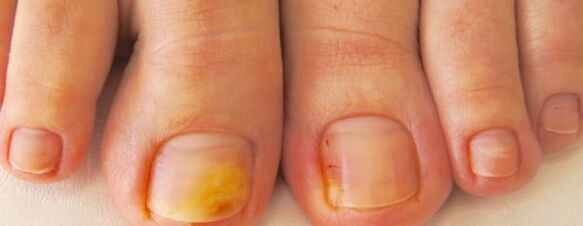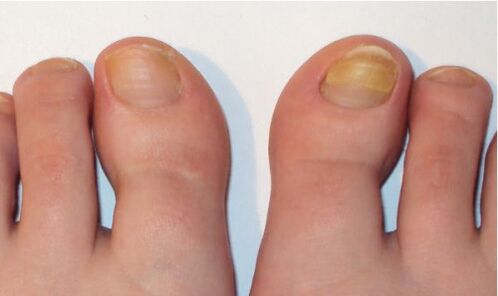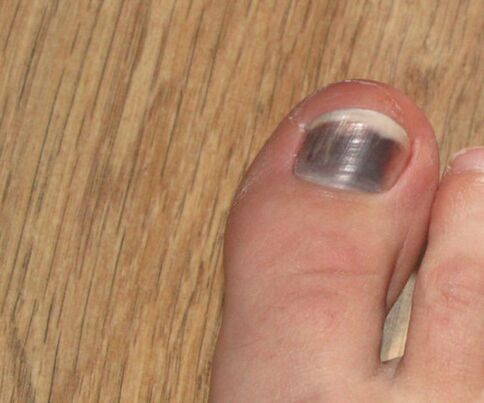Most people don’t even know that the most common sweating of the foot and the unpleasant odor that comes with it is one of the main signs of developing a fungal disease. Nail fungus, the symptoms of which do not appear immediately, can appear in any person who does not take any care of themselves. This disease is present almost everywhere and most often in public places. The sad thing is that a fungal disease is quite insidious: it is treated for a long time and is not effective in 100% of cases because it is characterized by relapses. In order to identify the fungus in time and start treatment, you need to know the manifestations of the nail fungus.

Spread of a fungal disease
The disease is caused by the development of parasitic fungi in the body. The best conditions for their formation and subsequent spread are the warm environment and high humidity. Many people are of the opinion that it is very easy to get such an infection in water parks, spas, beauty salons.
But the statistics are quite different: you can get a fungal infection on common items (bathroom, clothes, shoes, towels) even without leaving home. However, this is true if at least one member of the household is a carrier of mushrooms. And yet, what influences the spread of the fungus in principle? There are key aspects that cause infection with a fungal disease:
- Heavy sweating;
- Diabetes;
- The problem of being overweight;
- If the nail is damaged;
- Weak immunity.
In order to somehow protect yourself from a fungal infection, you only need to use personal care products, perform comprehensive shower and bath treatments, only wear shoes, arrange to wash carpets as often as possible, and so on. And if you have noticed the first signs of nail fungus, see a dermatologist immediately!
Signs of the fungus based on the pathogen of the disease

Signs of fungal nail fungus should be noticed in time. The effectiveness of a complex treatment of a fungal infection is determined by the extent to which the pathogen of the disease has been correctly identified. This can be explained by the fact that there are many species of fungi, and each species responds to a particular class of drugs.
In most cases, the pathogens of the disease are:
- Mold;
- dermatophytes;
- Yeast.
If the fungus started to develop due to yeast, it is almost impossible to detect the disease overnight. Under these conditions, the signs of the fungus on the legs are as follows:
- The skin around the feet and nails is itchy;
- The nail comes off.
Fungal infections occur in only 4-5% of cases. Very often dermatophytes affect the nail plate (94, 5%). There are 3 types of this pathogen and each one is very different:
- 1 type. There is a simultaneous defeat of the nail plate, the skin of the foot and the legs as a whole. Such a fungus can easily get on the nails and skin of the hand.
- 2 types. The disease only affects the toes of the thumb and little finger on the feet. You can also go between the folds between your fingers.
- 3 types. It is characterized by damage to the nail plate of the little finger and thumb, but the disease does not spread to the skin.
As for mold, the pathogen in this case is mold. It is extremely rare. It is most common in AIDS patients.
Other symptoms

It is often the case that when the disease is just beginning to develop, there are no fungal symptoms on the nails. But with extreme attention to the foot, one notices that round spots have begun to appear on the nail plate and the nail itself loses its shine and becomes rough. The development of a fungal disease affects the nail plate to a greater extent: initially it changes color, after which the nail peels, it can easily break. The shade of the nail plate is determined by the type of fungal pathogen.
Toenail fungus: symptoms (more)
- The nail plate turns black;
- The nail takes on an unusual shape, its structure changes completely;
- The nails become very fragile;
- Plastic nail clippings under the skin;
- It is followed by constant fatigue.
The abnormal appearance of the nail plate is the "bell" of a dermatologist's visit, and the nail fungus, the symptoms of which you have noticed, is confirmed or refuted there. life-threatening. But in addition to a purely aesthetic problem and discomfort, a fungal infection can sometimes cause serious complications, so the symptoms should not be ignored and treatment for the disease should begin in time as soon as it is recognized.
Doctor treating fungal diseases
It is realistic to detect the infection on your own, but only a doctor can confirm your suspicions. For an accurate diagnosis, your dermatologist will recommend certain tests. To accomplish them, a piece of destroyed nail plate or scraping of periungual tissue is taken.
Timely detection of infection facilitates further treatment and eliminates the possibility of complications. If treatment is not started at the right time, it will spread the disease to other organs and to all the fingernails.
Toenail fungus: treatment procedure
Therapy for the treatment of fungi is prescribed by a dermatologist - it all depends on how advanced the disease is, what type of fungus is present in the body and other factors. Usually, if the fungus is just beginning to form, medications are prescribed for external use. In more difficult situations, intensive treatment should be used.
By the way, it takes a lot of time. Therefore, it is in your best interest to see a doctor if you suspect the slightest fungal infection! The symptoms of nail fungus should be recognized in advance. And the sooner the disease is detected, the faster the treatment will happen!






























